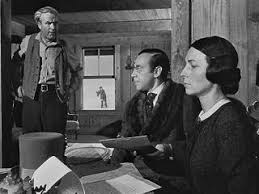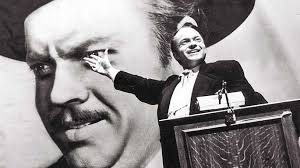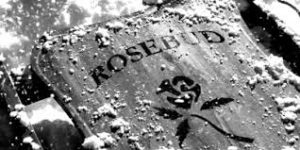Citizen Kane (Orson Welles, 1941) is widely regarded as the best film ever made. Not only being extremely famous when it came out initially but also decades on. It is constantly examined, scrutinised, compared and finally used as the high standard for many film directors, producers, actors etc.
Citizen Kane was released in 1941 by a famous studio “RKO” also know as radio-Keith-Orpheum. In 1941 the studios were nowhere near as developed as the current studios in the 21st century however one thing to note is that not all films were produced by these large studio companies. The fact that it was created in the RKO studios serves a purposes and is a show of the standard (higher than standalone film producers).
To start off with, one must look at the time that Citizen Kane was produced: the early 1940’s. Sound had already been incorporated into films and vibrant colour was starting to be used. The three strip Technicolour process had been used in the Wizard of Oz (1939, Victor Fleming) however was very expensive and so for a long movie like this it was decided that the regular monochromatic black and white film was to be used. This, however, was a useful decision as it helped create a sense of verisimilitude. The stark contrast between the lights and darks engulfed the viewer and showed the change of his personality, his health, and his wealth. Towards the end of the film the overall setting was darker – following his downfall and foreshadowing his eventual death.
Additionally the studio system had a large impact on the film’s look and feel. In 1941 the cameras had advanced to the point where the y could be moved around a good amount, cameras where placed on tracks and moved during actual recording. This gave an impressive modern look and helped improve the fluidity of film – something which not many films could boast about at the time. For example There is a scene in the beginning of the film whereby the camera tracks from the front of a room through a table that opens up for the camera to move through then closes again for when it is in shot. 
In conclusion Citizen kane was a masterpiece for many reasons but one of the most notable reasons was how sophisticated and intelligently it was made for its time. Although studios were nowhere near as developed as they are nowadays and cameras were far less portable, Welles still managed to capture the beautiful but saddening story of the famous newspaper mogul Charles Foster Kane. Its use of light and shadow, foregrounding, sound mixing and camera work were far ahead of its time and lead to the formation of one of, if not, the most famous movies of ALL time.








